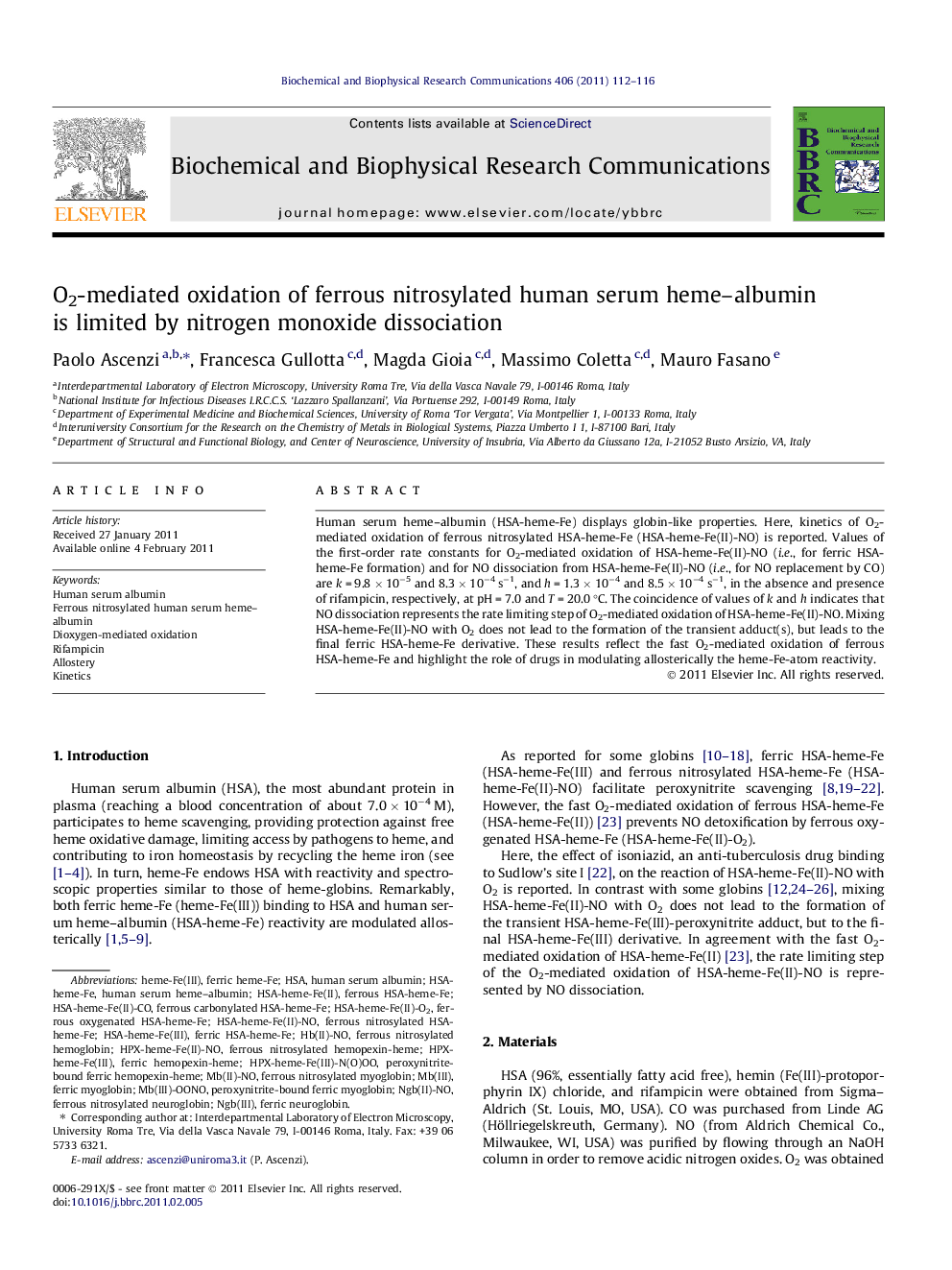| کد مقاله | کد نشریه | سال انتشار | مقاله انگلیسی | نسخه تمام متن |
|---|---|---|---|---|
| 1931030 | 1050537 | 2011 | 5 صفحه PDF | دانلود رایگان |

Human serum heme–albumin (HSA-heme-Fe) displays globin-like properties. Here, kinetics of O2-mediated oxidation of ferrous nitrosylated HSA-heme-Fe (HSA-heme-Fe(II)-NO) is reported. Values of the first-order rate constants for O2-mediated oxidation of HSA-heme-Fe(II)-NO (i.e., for ferric HSA-heme-Fe formation) and for NO dissociation from HSA-heme-Fe(II)-NO (i.e., for NO replacement by CO) are k = 9.8 × 10−5 and 8.3 × 10−4 s−1, and h = 1.3 × 10−4 and 8.5 × 10−4 s−1, in the absence and presence of rifampicin, respectively, at pH = 7.0 and T = 20.0 °C. The coincidence of values of k and h indicates that NO dissociation represents the rate limiting step of O2-mediated oxidation of HSA-heme-Fe(II)-NO. Mixing HSA-heme-Fe(II)-NO with O2 does not lead to the formation of the transient adduct(s), but leads to the final ferric HSA-heme-Fe derivative. These results reflect the fast O2-mediated oxidation of ferrous HSA-heme-Fe and highlight the role of drugs in modulating allosterically the heme-Fe-atom reactivity.
Research highlights
► Human serum heme–albumin displays globin-like properties.
► O2-mediated oxidation of ferrous nitrosylated human serum heme–albumin.
► Allosteric modulation of human serum heme–albumin reactivity.
► Rifampicin is an allosteric effector of human serum heme–albumin.
► Human serum heme–albumin is a ROS and NOS scavenger.
Journal: Biochemical and Biophysical Research Communications - Volume 406, Issue 1, 4 March 2011, Pages 112–116